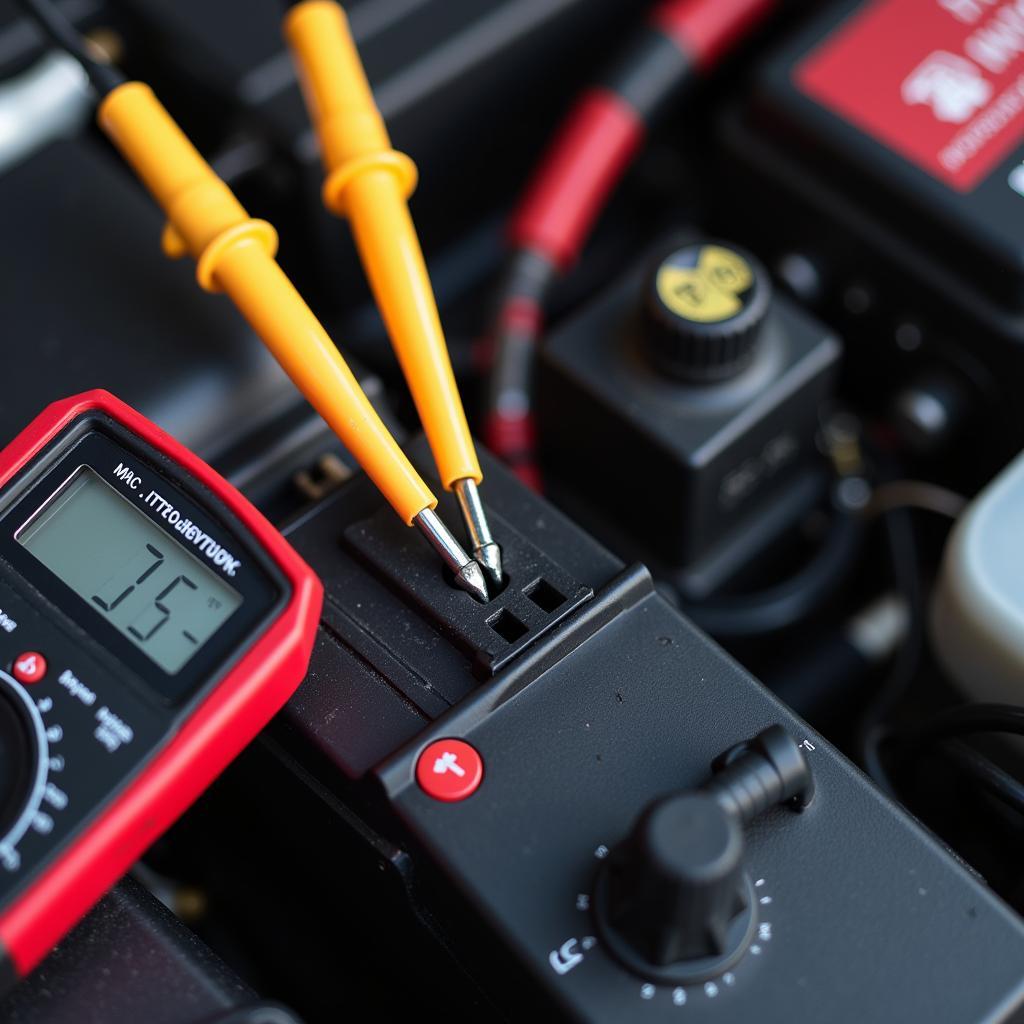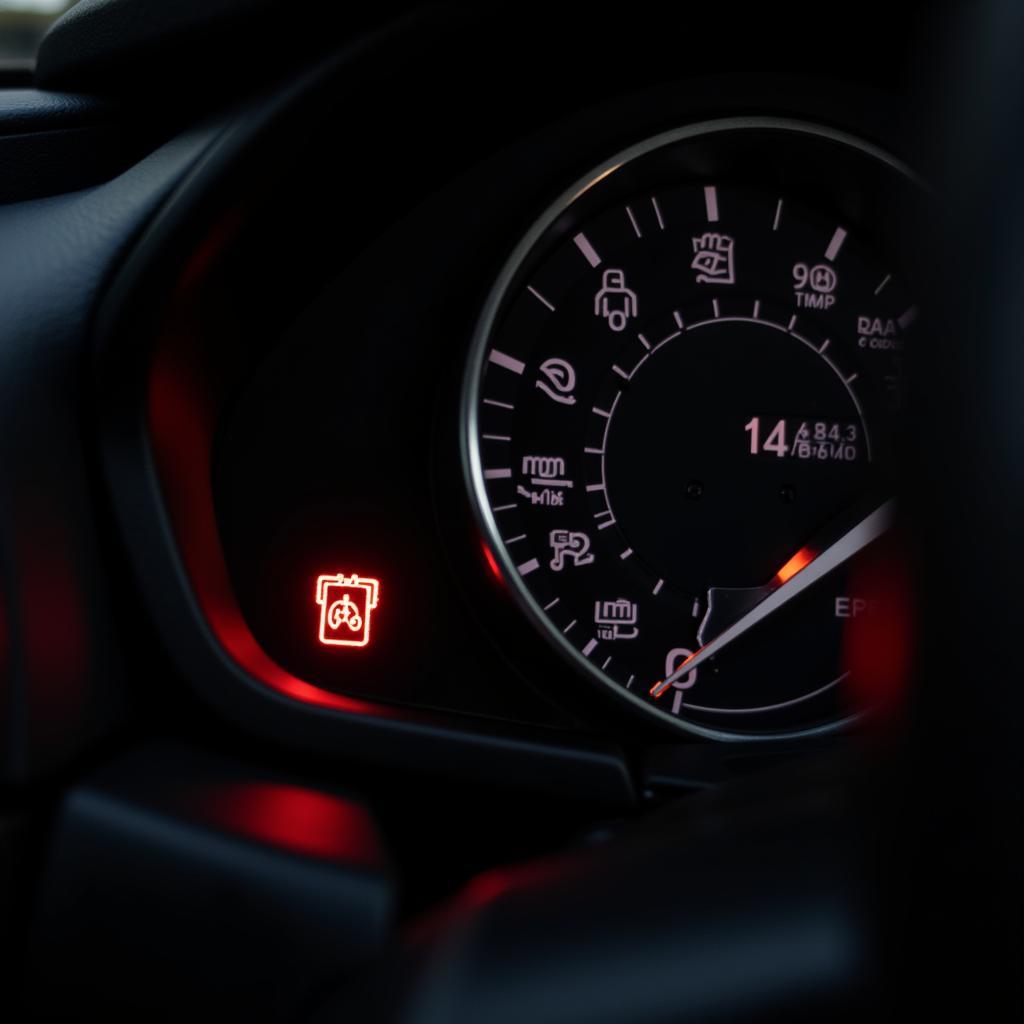Your car won’t start, and you’re wondering, “Is it the battery?” This is a common predicament, and often the first thought that crosses a driver’s mind. While a dead battery is a frequent culprit, several other factors could be at play. This guide will help you diagnose the problem, determine if the battery is the source of your troubles, and offer solutions for getting your vehicle back on the road.
Common Reasons Why Your Car Won’t Start
There are several reasons why your car might refuse to start. Understanding these possibilities can help you narrow down the issue and avoid unnecessary repairs.
- Dead Battery: A dead battery is the most common reason for a no-start. This can happen due to age, leaving lights on, extreme temperatures, or a faulty alternator.
- Faulty Starter Motor: The starter motor is responsible for cranking the engine. If it’s malfunctioning, you might hear a clicking sound when you turn the key, or nothing at all.
- Ignition System Problems: A faulty ignition switch, ignition coil, or spark plugs can prevent the engine from firing up.
- Fuel System Issues: If the fuel pump isn’t working, or the fuel filter is clogged, the engine won’t receive the fuel it needs to start.
- Alternator Problems: A failing alternator won’t charge the battery properly, eventually leading to a dead battery and a no-start situation.
Is a Clicking Sound a Sign of a Bad Battery?
Sometimes, yes. A rapid clicking sound when you turn the key often indicates a low battery charge. However, it could also mean a faulty starter motor or a bad connection between the battery and the starter.
Can Extreme Temperatures Affect My Car Battery?
Absolutely. Both extreme heat and extreme cold can significantly impact battery performance. Cold weather slows down the chemical reactions inside the battery, reducing its cranking power. Excessive heat can evaporate the electrolyte inside the battery, shortening its lifespan.
Diagnosing if the Battery is the Culprit
Here’s a step-by-step guide to help you determine if your battery is the problem:
- Check the Dashboard Lights: When you turn the key to the “on” position (without starting the engine), do the dashboard lights come on dimly or not at all? This could indicate a low or dead battery.
- Try the Headlights: Turn on your headlights. If they are dim or don’t come on, it’s another sign of a potential battery problem.
- Test the Battery Voltage: Using a multimeter, check the battery voltage. A fully charged battery should read around 12.6 volts. A reading below 12 volts suggests a weak battery.
- Try Jump Starting: If you have jumper cables, try jump-starting your car. If the car starts with a jump, it’s a strong indication of a bad battery.
“A common mistake people make is not checking the alternator after replacing a dead battery,” says John Miller, Senior Automotive Technician at Miller’s Auto Repair. “A faulty alternator could be the reason your battery died in the first place.”
 Testing Car Battery with Multimeter
Testing Car Battery with Multimeter
Solutions for a Dead Battery
If you’ve determined that your battery is the problem, you have a few options:
- Jump Start: Jump-starting your car can get you back on the road temporarily. However, it’s essential to address the underlying cause of the dead battery.
- Battery Charging: A slow charger can restore a dead battery to full charge. This can be a good option if you have the time.
- Battery Replacement: If your battery is old or damaged, replacement is the best solution.
“Investing in a high-quality battery and regularly checking its condition can save you a lot of headaches down the road,” advises Sarah Johnson, Lead Mechanic at Johnson’s Automotive Solutions.
Conclusion
A car that won’t start is a frustrating experience, but by following the steps outlined in this guide, you can determine if the battery is the culprit and take appropriate action. Remember to address any underlying issues, such as a faulty alternator, to prevent future problems. Don’t let a dead battery leave you stranded again!


